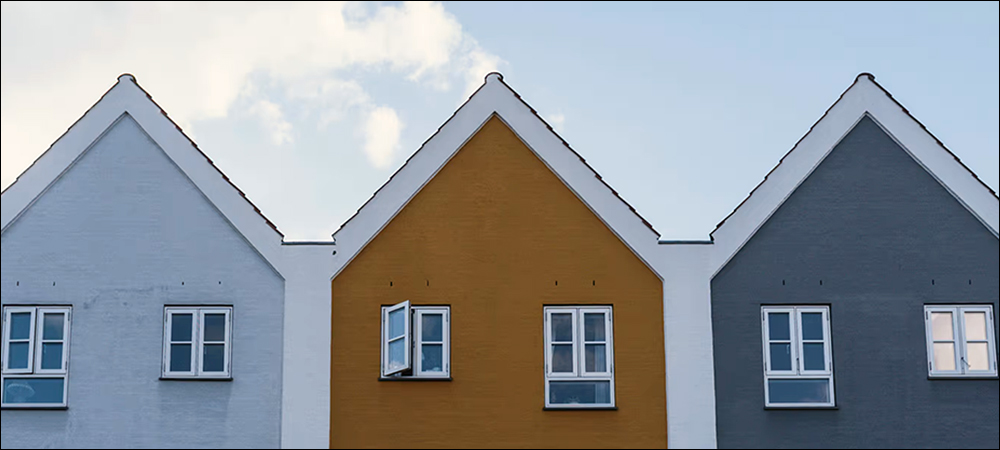- Creating Smarter Buildings with LoRa Connectivity
- Tracing Individuals via Carbon Dioxide Sensors
- Artificial Intelligence Predicts Building Conditions
Jan 10, 2023Swedish Internet of Things (IoT) technology provider Nordic Propeye is bringing its LoRaWAN-based heating, ventilation and air conditioning (HVAC) optimization solution to the United States following several years of deployment in Europe. Nordic Propeye is a rebranded version of Home Solutions, a 20-year-old buildings connectivity company. Under its new name, the business focuses on its LoRaWAN IoT solutions, with a cloud-based digital platform and portfolio of sensor devices and smart meters.

The company's OY1211 LoRaWAN CO2 meter system, released for a North American audience, leverages LoRaWAN chips from Semtech that provide connectivity to sensors which track carbon dioxide, temperature, humidity and radon levels. The goal is to automate the adjustment of buildings' HVAC settings based on sensor detections, including fan use, to address carbon dioxide levels, as well as the detection and adjustment of temperature and humidity. The company provides an artificial intelligence (AI) algorithm that leverages sensor data, as well as weather forecasts and building behavior, then overrides the HVAC default parameters with optimal temperatures and air flows, among other features.
The technology is designed to meet a need in the building industry to reduce energy consumption and inefficiencies, according to Stefan Lindgren, Nordic Propeye's CTO. According to the U.S. Department of Energy's buildings energy data book, buildings in the United States account for 39 percent of energy consumption. That means they also contribute a large percentage of greenhouse gas emissions. Nordic Propeye reports that its IoT solution has led to a 15 to 30 percent energy savings for buildings in which the earlier versions of the technology have been deployed since 2019.
Creating Smarter Buildings with LoRa Connectivity
Nordic Propeye first developed its IoT-based building-management technology in 2015, Lindgren says, using LoRaWAN connectivity. The company worked closely with IoT standards organization Lora Alliance, and its wireless, connected temperature sensor was the first end device that organization certified to use LoRa connectivity. The company has always leveraged Semtech's ICs.
"The building industry has historically been fairly conservative when it comes to new technologies," Lindgren states. "But we see that the LoRaWAN technology is really enabling a lot of new innovation and a lot of new features." Thus far, the solution has been primarily deployed in Scandinavian countries, but its use has also expanded to other parts of the world.
The solution now being offered in the United States provides carbon dioxide, temperature and humidity sensing, along with a variety of other sensors, leveraging LoRa gateways or existing LoRaWAN networks in a building's city. Buildings that require more LoRa connectivity typically necessitate the installation of a gateway every third or fourth floor.
Tracing Individuals via Carbon Dioxide Sensors
Carbon dioxide sensors can detect if a space "smells human," Lindgren explains. That's important for occupancy data, as it enables the system to identify whether building adjustments need to be made for the comfort of those onsite. By detecting carbon dioxide levels, the solution provides two functions: identifying where people are in real time, and measuring air conditions to detect when fans are needed to improve ventilation. In the latter scenario, the solution can automatically adjust fan speed and air flow.

Stefan Lindgren
Typically, the sensors are installed in rooms where people work in office spaces. They capture sensor data at rates intended to provide real-time data, but also to reduce energy consumption on the part of the battery-powered sensors. For instance, carbon dioxide sensors can take a reading every minute but only forward data every 20 minutes. When a change in readings occurs, indicating someone has entered the room or that the air quality is reducing, the sensors immediately send extra packets of data via LoRaWAN to enable the system to adjust settings accordingly.
"So we're measuring locally every minute," Lindgren states, "and then we decide whether this measurement changed more than a certain threshold," which users can predetermine based on their needs. How the data is used also varies. For instance, to reduce energy consumption, the solution can detect, based on carbon dioxide rates, that people have entered a conference room. The temperature could thus be set to rise to accommodate them, then decrease again to an energy-saving level once they leave. In addition, the system can use the collected data to improve the health of the air people breathe.
Since employees have been encouraged to return to the workplace following the COVID-19 pandemic, many companies are striving to ensure healthy air quality. High carbon dioxide and humidity levels can often come with airborne viruses. "Optimizing air quality has been especially important for getting people back into the offices and back into work," Lindgren says. Businesses can purchase the sensors and gateways if needed, then access the data via a subscription. The highest cost for users is the hardware, Nordic Propeye explains. In common installations, a single sensor is deployed to cover every 150 square meters (1,615 square feet).
Artificial Intelligence Predicts Building Conditions
The solution's software includes an AI engine that tracks building conditions, while also monitoring how the building behaves, and it can predict future events. The technology not only collects sensor data but weather forecasts, to create a model around the building. The software can then use information related to how a building meets the air quality index or air quality requirements, and thus make adjustments in advance that will ensure proper energy use and air quality.
The AI data is managed in the cloud, but the system also communicates with the on-premise building systems to adjust ventilation, heating and cooling. The goal, Lindgren says, is to balance well-ventilated, healthy conditions with energy reduction. "We need to optimize both." he states. "The exact tradeoff is a business decision of the property owner."
The system can leverage data from radon sensors. Scandinavia is especially prone to radon levels in mountainous regions, and this information can determine whether people are present, and thus allow the radon level to rise during the night when no one is there. If the system detects people in the building based on their carbon dioxide emissions, ventilation would automatically turn on.
Building owners using Nordic Propeye's solution can continue to leverage their existing heating and cooling systems, while adding plugins to those systems so they can communicate with the software. The company sells its own sensors, which come with built-in Semtech transceivers. "We have the benefit of working with a lot of great vendors when it comes to the individual components," Lindgren says. Nordic Propeye provides installation, typically via partners, including the installation of LoRaWAN gateways to improve connectivity where necessary.
The OY1211 LoRaWAN CO2 meter solution is adapted for the U.S. market using the 902 to 928 MHz frequencies, according to the United States' regulatory requirements. There are several pilot installations currently in place in U.S. office buildings, Lindgren says. "We were mainly focusing on large office buildings or retail," he explains, "where you have more advanced building-management systems." The technology covers around 15 million square feet of building space worldwide. At those sites, Nordic Propeye reports, it has brought down energy costs and consumption by at least 15 percent.
Key Takeaways:
- Nordic Propeye, a rebranded technology company from Sweden, is bringing its IoT- and AI-based building-management system to the United States.
- The technology uses LoRa connectivity and sensor data to manage conditions in a building for optimal energy consumption, and for the health and comfort of occupants.

